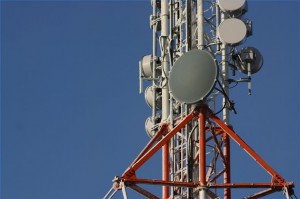Crumbsucking the FM Dial
Post by John Anderson
Brooklyn College at the City University of New York
For more than a decade now, a spectrum-grab of impressive proportions has been taking place on the FM dial in the United States. While services such as Low-Power FM and HD Radio have dominated many discussions about future paths for broadcasting, the proliferation of FM translator stations has dwarfed them both.
The Federal Communications Commission created the FM translator service in 1970. Translator stations are limited to 250 watts of power and can only rebroadcast the signals of other stations. The original intent behind the translator service was to help noncommercial FM stations located in areas with challenging terrain provide a mechanism by which to address coverage gaps.
In 1981, the Chicago-based Moody Bible Institute petitioned the FCC to allow translators to be fed with programming other than a locally based full-power FM station. The FCC initially denied Moody’s request, in large part due to worries that “some parties” were engaging in practices with translators that smacked of speculation, such as filing applications in bulk to preclude competitors from certain markets. The agency also noted that many broadcasters were stretching the existing rules by siting translators to extend the reach of a full-power station.
But by 1990, after a well-coordinated lobbying campaign, the FCC fundamentally overhauled the FM translator service, effectively opening it up to commercial development. Translators were also unchained from local parent-stations and could be fed remotely. These changes spurred the rise of broadcasters who used FM translators to build out their own networks of stations. Since there’s no office to keep or staff to pay, costs of operation are low. Religious and public broadcasters took the greatest advantage of these rule changes to expand their reach.
Then LPFM got in the way. In 1997, as the FCC began receiving petitions to legalize a local low-power radio service, it froze new applications for FM translators on the majority of the dial. From a purely technical perspective, the only real distinction between FM translators and LPFM stations is that LPFMs must be live and local to some degree, while FM translators cannot. But incumbent broadcasters fervently opposed the creation of LPFM because they believed that the band was running out of capacity to accommodate more stations.
There is a grain of truth to this argument; the Reagan-era FCC opened up the FM dial to an increasing number of applicants and liberalized the rules regarding the movement of existing stations between markets. By the time LPFM came on the scene, spaces for new development of the FM dial in most markets had been reduced to crumbs, typically doled out as full-power FM licenses in rural and exurban locales and translator stations elsewhere. Yet while incumbent broadcasters railed on LPFM stations for asking to be “shoehorned” onto the dial, they prepared to make their own grab for all the crumbs they could.
In 2003, the FCC opened up an application window for new FM translator stations, and more than 13,000 were filed. A goodly portion were tendered by established religious and public broadcasters, though individual speculators came primed to play big. One enterprising man in Idaho, who had previously worked to build a large network of translators for Calvary Chapel churches, wrote software to spam the FCC’s electronic filing system, filing some 4,000 applications under two corporate names. In all, the FCC issued more than 2,000 new translator construction permits, but many who got them never intended to build the stations—or, at best, they only planned to build them out just enough to sell them to someone else.
In the intervening decade, as proponents of LPFM fought a protracted battle with Congress to expand the service to a point of technical parity with FM translators, the trade in translators became a market all its own, now worth tens of millions of dollars. Single construction permits now sell for five to six figures each, and in major markets they’re more valuable than some full-power AM stations. Last June, a 10-watt translator licensed to broadcast from atop the Willis Tower in Chicago sold for $4.6 million, while in December, a 4-watt translator in Long Island City, Queens changed hands for $3.5 million.
Far removed from their original intent as supplemental repeater-stations, most FM translators are now widely employed by broadcasters as “new stations” built and programmed on the cheap. Since the FCC considers translators a secondary service, they don’t count against the agency’s caps on media ownership. It’s a loophole in the law that’s widely acknowledged with a wink and a nod. An executive at mid-market conglomerate Saga advises his sales staff to call translators “metro stations” in pitches to advertising clients, so as to deemphasize their relatively weak signals and “make them sound more legitimate.”
Furthermore, transactions in the translator marketplace demonstrate a curious financial symbiosis between noncommercial broadcasters and some of America’s largest radio conglomerates. For example, in multiple markets, the Educational Media Foundation—parent of the K-LOVE and AIR-1 music networks—has sold or leased translators to iHeartMedia, who uses them to relay programming previously available as an HD-only subchannel. (HD Radio’s proprietor, iBiquity Digital Corporation, openly urges stations to set up their own “HD-on-translator play” as way to make some analog hay out of the stalled U.S. digital transition.)
Other major broadcasters use translators to relay out-of-market stations, or to provide a foothold on the FM dial for their AM properties. In fact, AM broadcasters are clamoring for the FCC to open one more translator filing window just for them, as a way to provide “relief” to their “beleaguered” band. It’s the beginning of a trend toward the ultimate settlement of all over-the-air broadcasting on the FM dial, something already underway in several Latin American and European countries. While they may be small and secondary, the rise of translators speaks volumes about the state of broadcast innovation. Like most natural resources, broadcast spectrum is finite, and we’d be wise to utilize it effectively. Instead, we’ll deep-sea drill and frack it to exhaustion—spare no expense to suck those last crumbs.





So is this sort of analogous to other FCC policies designed to promote localism but don’t actually, like the Access Hour, etc?
Since translators were initially designed as fill-in stations and have been prohibited from originating their own programming since the beginning, it’s hard to say that translators promote localism in and of themselves. But what their distorted use over time — especially in the wake of LPFM — does suggest is that the FCC is willing to sacrifice localism on the altar of the desires of broadcast incumbents. I prefer to think of it as a combination of regulatory capture and agency disconnect/ignorance about the actual state of the public broadcast airwaves in the 21st century (the FCC is all about the Internet now).
An interesting article. One way to fix this, AND return ALL radio to its original intent of ‘in the public’s interest, convenience and necessity’ would be for the FCC to make an instant 180 on OWNERSHIP of broadcast facilities. ONE AM, ONE FM and ONE TV PER MARKET, REGARDLESS of market size, and we’d see an almost instant rejuvination of at least radio.
An interesting read. IF the FCC was TRULY interested in promoting ‘localism’ in radio, they would immediately do a 180 on how MANY stations ANY individual, partnership, or corporation could own per market. Allow ONE AM, ONE FM, AND ONE TV per market REGARDLESS of market size, and we’d see an almost instant revival in broadcasting ‘in the public’s interest, convenience, and necessity’.
[…] to an article at Antenna, the FM dial in the US is under unprecedented proportions of spectrum grabbing. To the uninitiated, […]